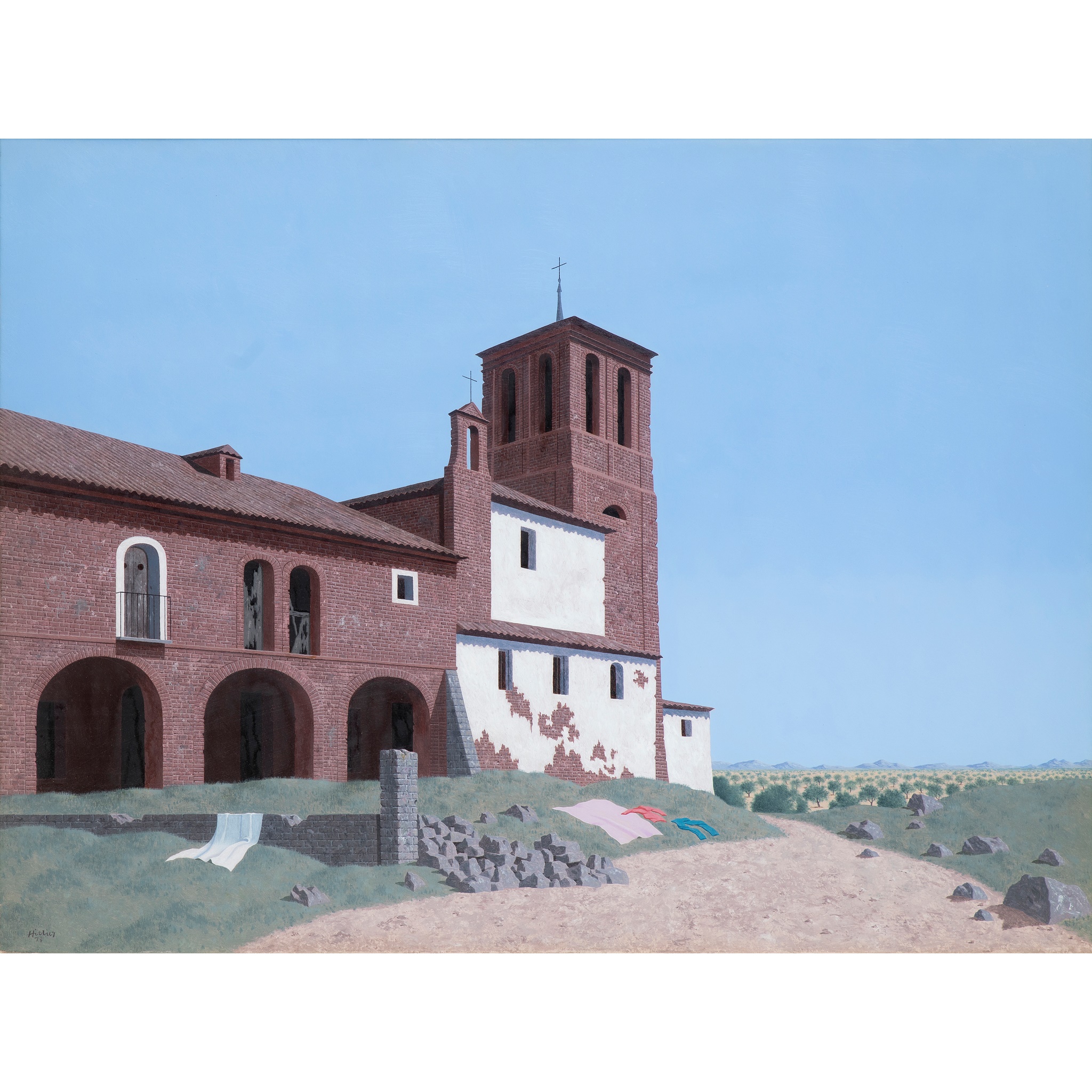Tristram Hillier (British 1905-1983) §
Deserted Monastery in Castile, 1978
£27,700
Auction: 28 October 2022 from 10:00 BST
Description
signed and dated (lower left), oil on canvas
Dimensions
59.5cm x 80cm (23 3/8in x 31 1/2in)
Provenance
Provenance:
Mr. W. Govett Esq.;
The Lefevre Gallery, London;
Christie's, London, Modern British Art, 10 June 2005, Lot 174 titled as 'San Juan Del Campo';Private Collection, London.
Exhibited:
Bradford Art Galleries and Museums, Bradford, A Timeless Journey, June - September 1983, cat. no. 72.
The current work will be included in the forthcoming catalogue raisonné of the Artist's paintings. The Estate would like to hear from owners of any works by Hillier. Please write to The Estate of Tristram Hillier, c/o Lyon and Turnbull.
Footnote
The surrealist inflections of Tristram Hillier’s early work were underpinned by Bernard Meninsky’s tutelage at Westminster School of Art’s evening classes; Hillier also studied under Henry Tonks at the Slade, but felt constrained by the School’s traditional approach. Exposure to surrealist and cubist painters during a period in late 1920s and ‘30s Paris proved formative, and by the time Hillier returned to England his reputation as a leading British Modernist painter had crystallised. This was aided in part by a fruitful exhibiting career with London’s Lefevre Gallery from 1931, as well as his membership of Paul Nash’s Modernist Group ‘Unit One’.
Hillier’s Post-war canvases evidence maturation towards a starker, franker style suffused with a sense of stillness and detachment. This view of a deserted Spanish monastery is painted with a characteristic precision and intensity bordering on photorealism, disrupted only by the nod to abstraction in the monochromatic blue of the sky. The legacy of surrealism can be identified in the cast-off clothes and towels which further the idea of desertion.
It is noteworthy that Hillier chose to portray a deserted monastery given the artist’s complicated relationship with his faith. His father had found solace in the Catholic Church after turning blind aged thirty, and in 1905 Tristram was born into a devoutly religious environment. Following the sudden deaths of his mother and brother in 1917 (the latter having perished during active service in northern France), Hillier seriously contemplated entering a monastery. He spent the following two decades as an itinerant artist, moving around England and Europe, with a spell in Beijing learning Chinese. It was not until the 1950s that he settled once more in Somerset and re-entered the Catholic Church. He increasingly portrayed religious subjects, and maintained a strict daily routine, passing most of his time in the studio in solitude.
Hillier nevertheless continued to travel, particularly to Spain and Portugal, and was moved by the topography and ways of life he encountered there. All of this he recorded through sketches and photography, which he would use to build up fully-realised compositions upon his return to Somerset.

